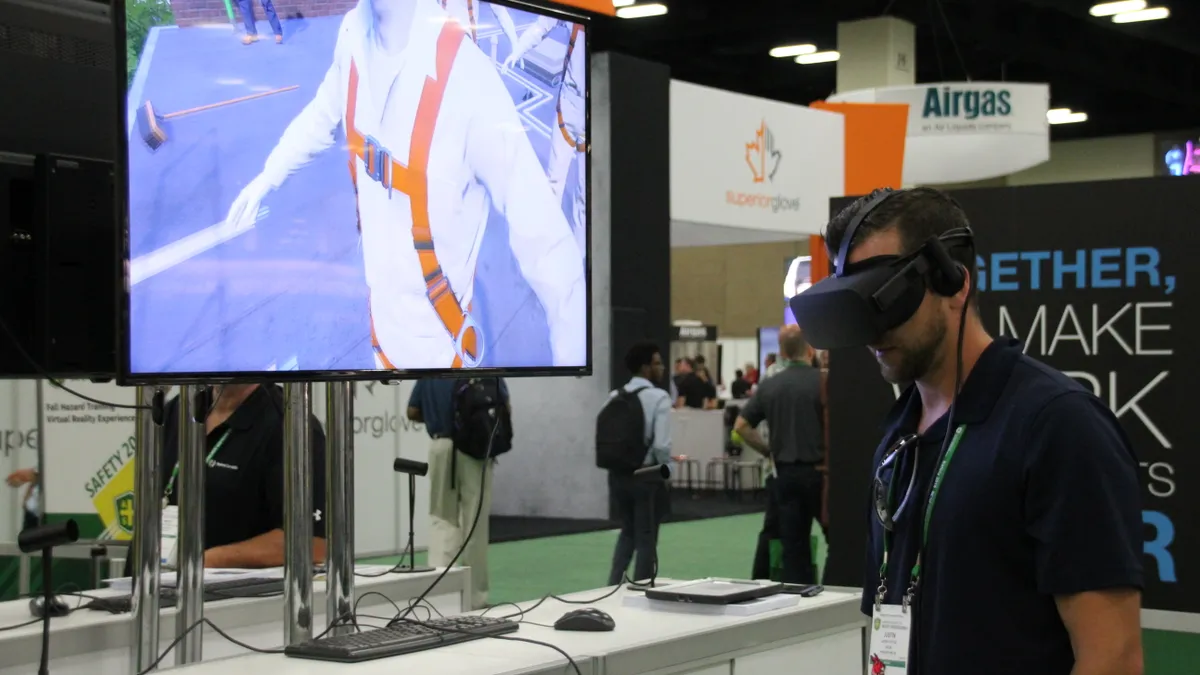Dive Brief:
- The American Society of Safety Professionals (ASSP) released the virtual reality, headset-based VR Fall Protection Experience app that simulates high-risk construction environments, according to a press release. The app follows ANSI/ASSP Z359 fall protection and fall restraint standards.
- Users are immersed in a graphic simulation of a two-story building and are prompted to identify common fall hazards within it. They then select materials for a fall protection system and can learn about anchorage strength, equipment limitations and fall clearance while seeing it in action.
- The app, available for purchase through ASSP’s online store, demonstrates that fall protection is a system of components that must be carefully selected, not just a single piece of equipment, according to the statement.
Dive Insight:
Analyzing data throughout a 33-year period, the National Institute for Occupational Safety and Health found that 42% of construction worker deaths involve falls. Falls also claimed the top spot on OSHA’s most frequently cited violations list in 2017.
Training technology, such as the ASSP app, could help reduce those numbers. Last year, Dodge Data & Analytics released a SmartMarket report concluding that technology improves on-site safety. Yet despite the demonstrable positive impact of technology, only 26% of construction companies surveyed by JBKnowledge said they use software or a mobile app.
Virtual reality and augmented reality technologies are growing quickly in use, with International Data Corp. research indicating that total spending on VR and AR will swell to $17.8 billion this year. Gaming will lead much of that growth, but commercial use will account for more than 85% of spending by 2021.
The construction industry is among those commercial sectors exploring how VR and AR can benefit it, and AECOM is part of that movement. Last year it signed a memorandum of understanding with tech company HTC to develop VR technology for the AEC industry. HTC’s Vive Focus standalone VR headset was the first product tested at a laboratory in Taiwan. Developers will certainly continue producing other VR technologies geared toward aiding in the planning, building and maintenance of structures.
Meanwhile, Reno, Nevada, is hosting the region’s first VR construction heavy equipment simulators in a new training facility. A 1,200-square-foot classroom features two Caterpillar large wheel loader simulator systems that marry original controls with common machine applications to teach various worksite jobs.
In similar fashion, Serious Labs has an Aerial Virtual Reality Training Simulator that combines the company’s scissor lift and boom lift modules to provide an aerial operator training solution. Metrics for each of the modules provide feedback about the operator’s performance.













